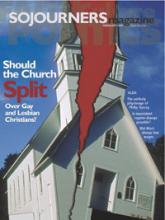Sometimes social change begins at home. When longtime community activist Jim Dickerson and his wife, Grace, used their family home as collateral to secure a bank loan in 1982, the funds went to support Manna Inc., then a fledgling affordable-homeownership initiative for formerly homeless lower-income families. Over the last 22 years, Manna has produced home-owning opportunities for more than 800 lower-income, first-time buyers in the Washington, D.C. area.
According to Dickerson, 22 years is about how long it takes for a project like Manna to reach a modicum of maturity, credibility, and scale. "Creating affordable housing opportunities and revitalizing neighborhoods takes time, patience, perseverance, and lots of money," he says. "It takes a commitment to building unified coalitions, public-private partnerships, and a willingness to embrace long-term relationships with the people and neighborhoods you serve."
But with increasing housing prices in urban and metropolitan areas, even veteran affordable housing groups like Manna—a multi-denominational Christian organization with roots in D.C.’s Church of the Saviour and For Love of Children—are facing new obstacles. The State of the Nation’s Housing: 2002, published by the Joint Center for Housing Studies at Harvard University, reports that inflation-adjusted home prices rose 5.7 percent between 2000 and 2001 alone. In the nation’s capital, the median sale price for an existing single-family home in 2001 was $205,300. Suburban districts also face higher housing prices, as sprawl regions outside Atlanta, Los Angeles, and Dallas reached "residential densities" of 1,000 per square mile in 2000.
Read the Full Article

